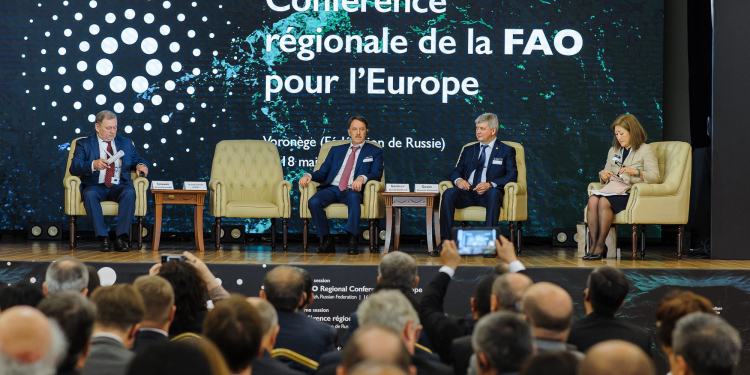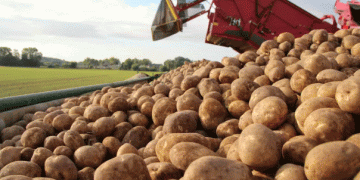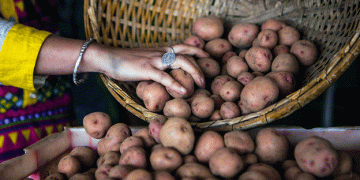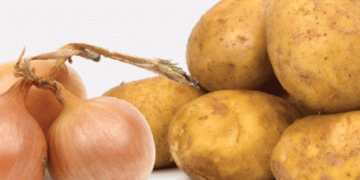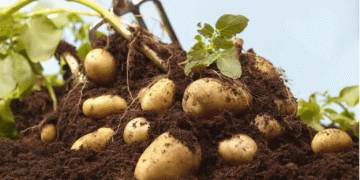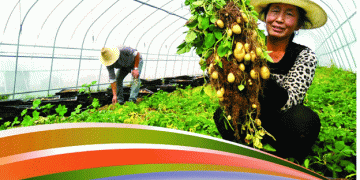Five years ago, when United Nations member states adopted the 2030 Agenda for Sustainable Development, the resolution made it clear that tackling the current global challenges would require collaborative partnerships.
The 17 Sustainable Development Goals (SDGs) which lie at the heart of the 2030 Agenda are a call to action for everyone to work together to eradicate poverty, protect our planet and improve the lives of people around the world.
With their expertise in generating innovation, developing capacity and sharing knowledge, academia and research institutions can help to advance progress across all three dimensions of the Sustainable Development Agenda – economic, social and environmental – and help transform the SDGs from goals to reality.
For this reason, they are also natural partners for United Nations agencies which promote scientific and technical knowledge, such as the Food and Agriculture Organization of the United Nations (FAO).
FAO works to improve food security and nutrition for all and its collaborations with academia and research institutions go hand-in-hand with its mandate. These partnerships enhance FAO’s work in a variety of ways, including helping the organisation to respond effectively to serious threats to food security and livelihoods.
In two recent examples, such partnerships have been essential to FAO’s response to two transboundary pests: the fall armyworm (Spodoptera frugiperda) and the desert locust (Schistocerca gregaria).
While the increase of transboundary plant pests can be attributed to a variety of elements such as trade, climate change, land degradation and the changing conditions of agro-ecological environments, limiting their spread strongly depends on two areas that academia excels in: the development of innovative approaches and the diffusion of knowledge.
Originally from tropical and subtropical areas of the Americas, fall armyworm (FAW) is a pest that is now present in Sub-Saharan Africa, the Near East, Asia and the Pacific. Its ability to travel long distances has allowed it to reach 100 countries in less than four years, and it is estimated that it will soon spread to other regions. Once it finds a new habitat, it is there to stay.
The FAW is a polyphagous insect pest and it causes considerable yield losses in maize as well as in more than 80 other crops. It is estimated that, for 12 African countries alone, FAW could cause losses of 8.3 million to 20.6 million metric tonnes of maize annually, equivalent in value to US$2.5 billion to US$6.2 billion and enough to feed 40 million to 100 million people. Academia and research institutions have helped FAO to assist governments and farmers by raising awareness about the armyworm and how to sustainably manage the pest.
In response to the rapid increase in the pest’s numbers, FAO launched a Global Action for Fall Armyworm Control to ensure a strong coordinated approach at country, regional and global levels.
At the same time, FAO’s partnerships with several research institutions, including the International Institute of Tropical Agriculture (Nigeria), the International Centre of Insect Physiology and Ecology (Kenya) and the Brazilian Agricultural Research Corporation (Brazil) helped to advance efforts to develop sustainable control techniques in different regions where the pest had appeared.
FAO also worked with universities to develop tools and training which would help those dealing with the problem first hand.
In South Africa, FAO partnered with North-West University to identify solutions that reduce the impacts of FAW larvae in crop plantations and would be readily available to all farmers. Tests on FAW control practices are run using locally available materials and techniques and successful results are then shared with researchers and farmers through publications and farmer training.
Together with the Chinese Academy of Agricultural Sciences, FAO established a South-South cooperation project which promotes sustainable management of FAW in Asia and Africa through the development, transfer and extension of innovative biologically-based integrated pest management techniques.
The project engages farmer field schools or other complementary extension services to teach people how to manage the pest through natural biological controls (existing predators, pathogens and parasitoids) instead of highly hazardous pesticides.
Taking advantage of increased digital literacy worldwide, FAO and Pennsylvania State University collaborated to create the “Fall Armyworm Monitoring and Early Warning System”(FAMEWS), which provides real-time information and alerts on FAW infestations and migrations.
The app offers information on which actions should be taken to manage the pest at each stage, including suggestions on locally available biological management methods.
Desert locusts
A different kind of threat is that posed by the current upsurge of desert locusts on which FAO and its partners are collaborating in support of affected countries. The desert locust is the most destructive migratory pest in the world, posing a major threat to food security and rural livelihoods. Able to rapidly travel long distances, desert locusts are ravenous eaters that target food crops and forage: a single square kilometre of a swarm has the capacity to consume the same amount of food in one day as 35,000 people.
FAO’s technical experts worked with more than two dozen academic and research institutions on a wide assortment of activities to help countries facing desert locust invasions, including migration modelling, climate prediction, capacity development and early warning.
Again in partnership with Pennsylvania State, FAO developed eLocust3m, a smartphone app that provides critical information for early warnings and pest-control activities. eLocust3m allows users to upload data on desert locusts, which is then assessed and validated by in-country national locust centres and shared with the Desert Locust Information Service at FAO headquarters.
A collaboration with experts from the European Commission and with the Belgian institutions UCLouvain and the Flemish Institute for Technological Research helped FAO to monitor changes in vegetation over time in possible habitats of the desert locust.
Using data from MODIS and the PROBA-V satellites, the project provides spatial-temporal variations of the green vegetation, covering a surface of 60 countries. As greenness maps become available every 10 days, users are able to track the development of vegetation and the impacts of desert locusts on it.
The examples above are but a few of the ways in which academia and research institutions actively contribute, in cooperation with FAO, to furthering progress towards the Sustainable Development Goals: the innovation, scientific and technical knowledge that they offer make them strategic partners for all areas of the 2030 Agenda.
